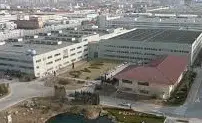The park concept has several uses. In this case we are interested in its meaning as the place where certain types of facilities are grouped . We must indicate that this word park has its etymological origin in Latin, specifically in the noun “paricus”, which can be translated as “fenced” or “roundabout”.
Industrial , meanwhile, is that linked to industry : the operations and infrastructure that allow obtaining, transforming, processing and transporting various natural products. Its etymological origin is in Latin, specifically in “industrialis”. This word was formed by joining the prefix “in-”, which means “inwards”; the verb “struere”, which is equivalent to both “build” and “gather”; and two suffixes: “-ia”, which indicates “quality”, and “-al”, which is used to indicate “relative to”.
 An industrial park , in this framework, is a sector in which various activities related to the industry are developed , offering advantageous conditions for companies to settle there. Industrial parks are usually promoted by the State .
An industrial park , in this framework, is a sector in which various activities related to the industry are developed , offering advantageous conditions for companies to settle there. Industrial parks are usually promoted by the State .
Also called industrial pole , industrial estate , industrial zone or industrial belt , the industrial park can provide companies with facilities for transporting products and accessing energy sources. Tax benefits and tariff reductions may also be offered to those who settle in the park.
It is common for industrial parks to have common services for all their members, such as wastewater treatment or surveillance . In short, the company that is located in the industrial park has several issues easier compared to other locations.
It is important to know that there are different types of industrial parks based on different criteria:
-If we take into account its location, we can find the urban, the semi-urban and also the rural.
-In the event that we take as a criterion what the motivation behind them is, there are two main modalities: urban planning and development.
-If we proceed from the type of industrial activities that are developed in these aforementioned parks, we can find the auxiliaries, which have small companies of different activities; the specialized ones, which revolve around a specific single activity, or the composite ones. The latter are those that have industries that have nothing to do with each other.
-Finally, if what we take into account is the sponsor of the industrial park, the classification is as follows: private, state, mixed or private with state assistance.
Not to mention that we can also talk about municipal, regional, provincial or national industrial parks.
In Peru , for example, there is the Arequipa Industrial Park . It is an area of more than fifty hectares that was inaugurated in 1966 .
The Junín Industrial Park , on the other hand, is located in the province of Buenos Aires ( Argentina ). It has ninety-two plots distributed over more than a hundred hectares with natural gas , sewage, electricity , water and telephone networks, among many other services.
